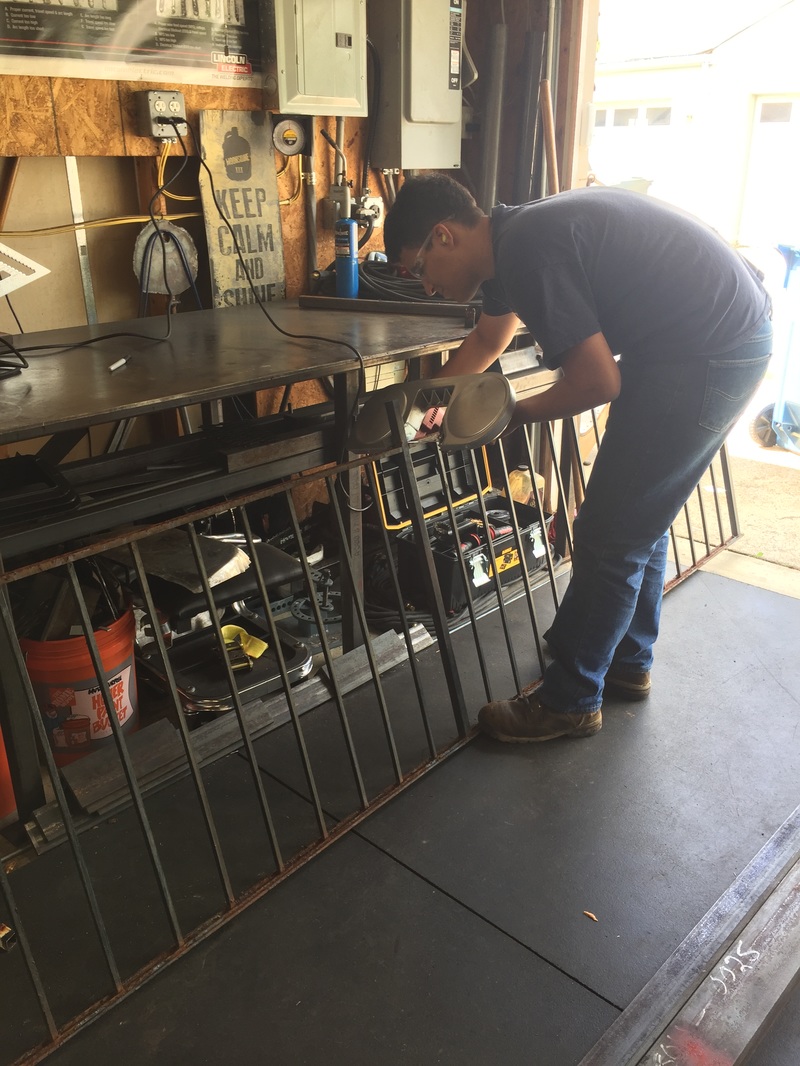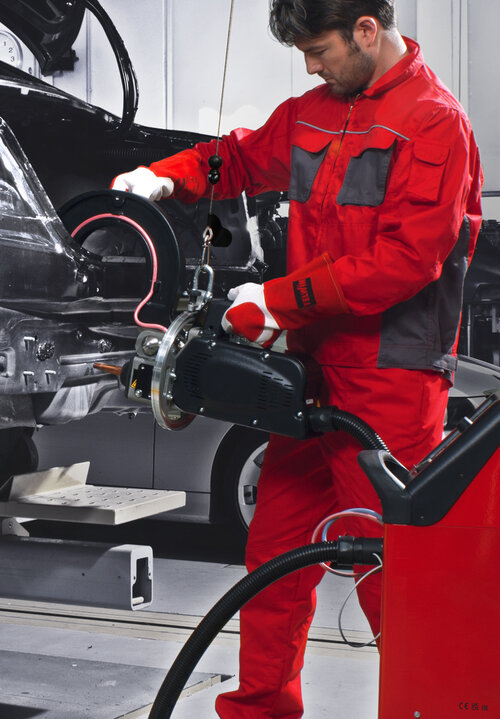All About Welding: Secret Insights Into Techniques and Finest Practices for Success
Welding encompasses a variety of strategies, each suited for particular products and applications. Comprehending these methods, such as GMAW, SMAW, and TIG, is necessary for accomplishing ideal results. Furthermore, the appropriate devices and safety and security practices can not be overlooked. As preparation and fixing play essential roles in the welding procedure, understanding these aspects can substantially improve the high quality of the end product. What are the vital factors that ensure an effective weld?
Recognizing Different Welding Techniques
Welding techniques encompass a selection of approaches, each matched to details applications and materials. Amongst the most common methods are Gas Steel Arc Welding (GMAW), Protected Steel Arc Welding (SMAW), and Tungsten Inert Gas Welding (TIG) GMAW, also called MIG welding, is popular for its rate and flexibility, making it perfect for thin materials. SMAW, or stick welding, is preferred for its simplicity and performance in outdoor atmospheres, particularly with thicker steels. TIG welding provides accuracy and control, making it suitable for complex job and non-ferrous metals (Montana Mobile Welding and Repair). Each method has its unique advantages and considerations, allowing welders to select the finest approach based on the job's requirements, product type, and wanted outcomes. Comprehending these strategies is necessary for successful welding
Crucial Welding Equipment and Devices
While various welding techniques call for specific skills, the appropriate equipment and tools are similarly vital for accomplishing top quality results. Essential welding equipment consists of welding devices, which differ depending upon the technique-- such as MIG, TIG, or stick welding. Protective gear, consisting of headgears, aprons, and gloves, warranties safety and comfort during the process. On top of that, components and clamps aid safeguard products in location, making certain precision in welds. Consumables like welding rods, cable, and protecting gas are likewise essential components that affect the top quality of the weld. Devices such as cutters and grinders promote surface area preparation and post-weld ending up, contributing to a professional end result. Purchasing premium devices ultimately boosts the efficiency and effectiveness of welding tasks.
Safety And Security Practices in Welding
Correct safety and security methods are vital in the welding industry to shield employees from potential threats. Welders should use suitable personal safety equipment (PPE), consisting of helmets with correct shading, gloves, and flame-resistant clothing. Appropriate ventilation is essential to lower exposure to hazardous fumes and gases created during the welding process. Additionally, workers should be learnt the appropriate handling of welding equipment to avoid crashes. Fire precaution, such as keeping flammable products away from the welding area and having fire extinguishers readily offered, are required. Normal inspections of devices and work spaces can assist recognize potential hazards before they bring about accidents. By sticking to these safety practices, welders can create a much safer working setting and lessen threats associated with their trade.
Preparing Materials for Welding
Preparing products for welding is a vital step that considerably affects the high quality and stability of the end product (Montana Mobile Welding and Repair Welding). Proper preparation includes cleaning the surface areas to get rid of impurities such as corrosion, oil, and dirt, which can jeopardize the weld. Methods such as grinding, sanding, or using solvents are typically employed to accomplish a clean surface area. Furthermore, making certain that the products mesh comfortably is crucial; gaps can bring about weak welds. It's additionally crucial to consider the positioning and positioning of the parts, as this will certainly impact the convenience of welding and the last end result. Picking the ideal filler material and making certain compatibility with the base metals is crucial for accomplishing strong, long lasting welds.
Tips for Getting High-Quality Welds
Achieving top notch welds needs interest to information and adherence to best techniques throughout the welding process. Appropriate joint prep work is necessary, guaranteeing surface areas are cost-free and tidy from pollutants. Selecting the suitable filler material and welding technique based on the base metals is important for suitable bonding. Keeping consistent traveling speed and angle while welding can advertise and avoid problems uniformity. Furthermore, managing warm input is essential; extreme warm can cause bending and deteriorated joints. Routinely evaluating the welds throughout the process enables immediate modifications if essential. Lastly, utilizing appropriate post-weld treatments, such as cleaning and tension relief, can improve the toughness and honesty of the weld, inevitably making certain an effective result.
Repairing Typical Welding Issues
Welding often presents obstacles that can influence the high quality and stability of the final product. Common issues such as porosity, inconsistent weld grains, and overheating can develop, each requiring certain repairing methods. Understanding these issues is necessary for welders to enhance their abilities and achieve excellent outcomes.
Porosity Troubles Described
Although porosity can commonly be forgotten, it continues to be a vital concern in welding that can endanger the integrity of a finished product. Porosity refers to the presence of little gas pockets within the weld grain, which can weaken the joint thermal welding and lead to premature failing. This issue generally occurs from pollutants, dampness, or inappropriate shielding gas insurance coverage throughout the welding process. To reduce porosity, welders must verify that the base materials are completely dry and tidy, make use of suitable protecting gases, and preserve constant welding specifications. Regularly checking the tools and environment can likewise assist recognize potential issues before they show up in the weld. Dealing with porosity efficiently is necessary for attaining strong, sturdy welds that meet high quality requirements.

Inconsistent Weld Beads
Irregular weld grains can significantly influence the high quality and stamina of a completed item. Various aspects add to this issue, including inappropriate traveling speed, wrong amperage settings, and inconsistent electrode angles. When the welder moves also quickly, a bead may show up narrow and lack infiltration, while relocating also slowly can trigger extreme accumulation. Furthermore, making use of the incorrect amperage can result in either damaging or too much spatter, both of which concession weld stability. The welder's strategy, such as inconsistent lantern activity, can likewise lead to uneven grain look. To minimize these troubles, welders ought to focus on keeping consistent, regulated movements and making sure appropriate equipment setups to accomplish uniformity in their welds. Uniformity is key to accomplishing reliable and solid welds.
Getting Too Hot and Warping Issues
Excessive warmth throughout the welding process can bring about significant overheating and contorting concerns, affecting the architectural integrity of the workpiece. These troubles frequently materialize as distortion, which can endanger positioning and fit-up, making further assembly testing. Factors contributing to overheating consist of the choice of welding specifications, such as voltage and take a trip rate, as well as the sort of material being welded. To alleviate these issues, welders should maintain regular traveling speed and proper warmth input while keeping track of the workpiece temperature level. In addition, preheating or post-weld heat treatment can aid ease anxieties triggered by quick cooling - Belgrade Welding. Regular assessment and adherence to best methods are important in preventing getting too hot and making certain the durability and reliability of welded frameworks
Frequently Asked Inquiries
What Are the Profession Opportunities in the Welding Sector?
The welding industry offers diverse job opportunities, consisting of settings as welders, educators, examiners, and engineers. Experts can work in manufacturing, building, aerospace, and automotive industries, profiting from strong demand and affordable incomes in numerous duties.
Exactly How Can I Improve My Welding Speed Without Sacrificing High Quality?
To boost welding speed without giving up quality, one ought to practice effective methods, keep equipment, maximize setups, and improve hand-eye control. Routine training and looking for responses can likewise greatly add to attaining faster, high-grade welds.
What Accreditations Are Available for Welders?
Various certifications exist for welders, including those from the American Welding Culture (AWS), the National Facility for Building Education And Learning and Study (NCCER), and numerous industry-specific organizations. These qualifications improve employability and demonstrate ability effectiveness.
Just How Does Welding Influence the Qualities of Metals?
Welding affects the properties of metals by modifying their microstructure, which can bring about adjustments in strength, ductility, and hardness. Warm input and air conditioning prices throughout the view it process substantially affect these material features.
Can I Bonded Dissimilar Metals With Each Other?

Comments on “Major welding failures you can fix fast by Montana Mobile Welding and Repair Belgrade Fabrication”